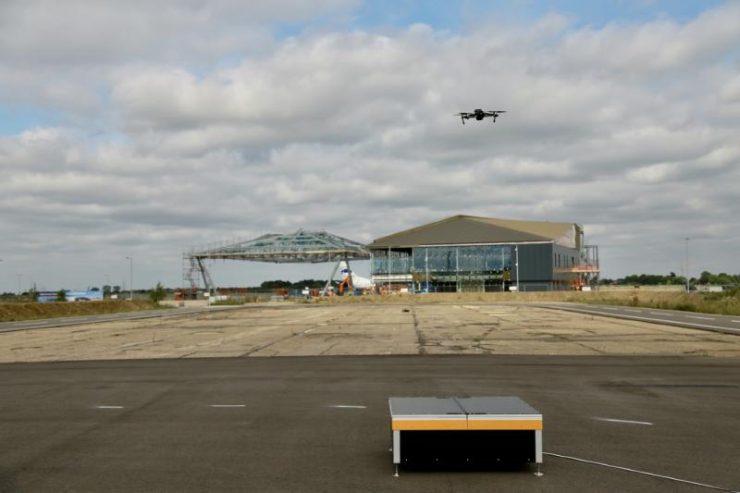By Jenny Beechener
To unleash the potential of drones to carry out humanitarian, industrial and other operations, the industry needs to break the link between the pilot and the human, according to a webinar hosted by Altitude Angel on 11 August 2020. Herotech8 CEO Edward Anastassacos says: “Scalability is the holy grail to tap into growth of drone operations, especially multiple operations by one person.”
Drone-in-a-box provider Herotech8 supports round-the-clock automated drone operations without the need for an operator on-site. “We want to reduce the level of complexity and minimise the burden for the customer. Unmanned Traffic Management (UTM) is a fantastic way to do that,” says Anastassacos. The company wants to reduce blockers encountered today that result in case-by-case restrictions. “From a technical standpoint, there is a lot in place already: automated charging, long distance, flight monitoring. The challenge is getting authorisation to fly the way we envisage.” He would like to see a more prescriptive approach.
UTM service provider Altitude Angel is developing ways to support automated unsupervised beyond visual line of sight (BVLOS). CEO Richard Parker explains: “The customer doesn’t care about the art of flying, they want the drone to do a job. Aspects such as logistics, getting airborne, safety etc needs to be invisible.” Parker says this can be provided by a series of API technical interfaces and integrated by manufacturers. “When you print a document, you don’t need to understand how a printer works. UTM is key to this scenario.”
Nevertheless, there are challenges when the human is removed from the loop and the industry is engaged in multiple trials to uncover real-life issues and challenges. Parker says it is essential that the industry continues to test and to push the bar to inform the civil aviation authorities and the regulators. These demonstrations yield gaps and also yield patterns which help to shape future standards.
The rigorous requirements necessary for BVLOS operations add to the complexity. “We need to understand other airspace activity,” says Anastassacos. “We also need information about the weather and the ground-based infrastructure. UTM is a central piece in this.” Connectivity is important, but the main obstacle facing Herotech8 remains getting approvals to fly BVLOS and leveraging the capabilities of UTM.
(Image: Herotech8 uses drone-in-a-box technology to carry out remote runway inspection at Cranfield University Airport, UK)
For more information visit:




